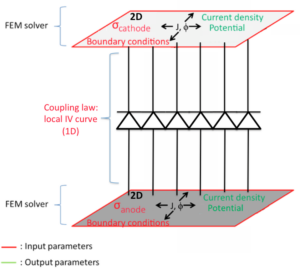Fluxim, from Winterthur in Switzerland, and a spin-off from the Institute of Computational Physics at the Zurich University of Applied Sciences which specialises in software for light simulation, has introduced new software that allows the simulation of large area semiconductor devices (OLED, thin-film PV), taking into account the voltage drop in the electrodes due to important resistive effects when the size of the device increases.
The company said that Laoss has been successfully tested, confronting its results with several experimental results contained in the paper: K. Neyts et al.: “Inhomogeneous luminance in organic light emitting diodes related to electrode resistivity”, J. App. Phys., 100, 114513(2006).
The software can be used for applications such as “metal finger width optimisation” and electrode material choice.

